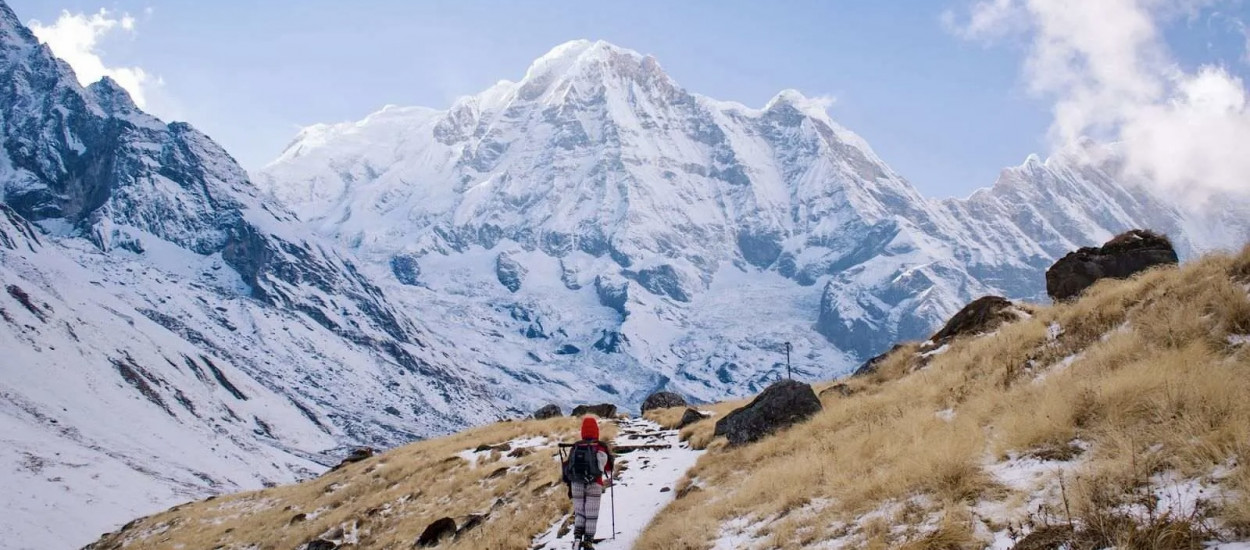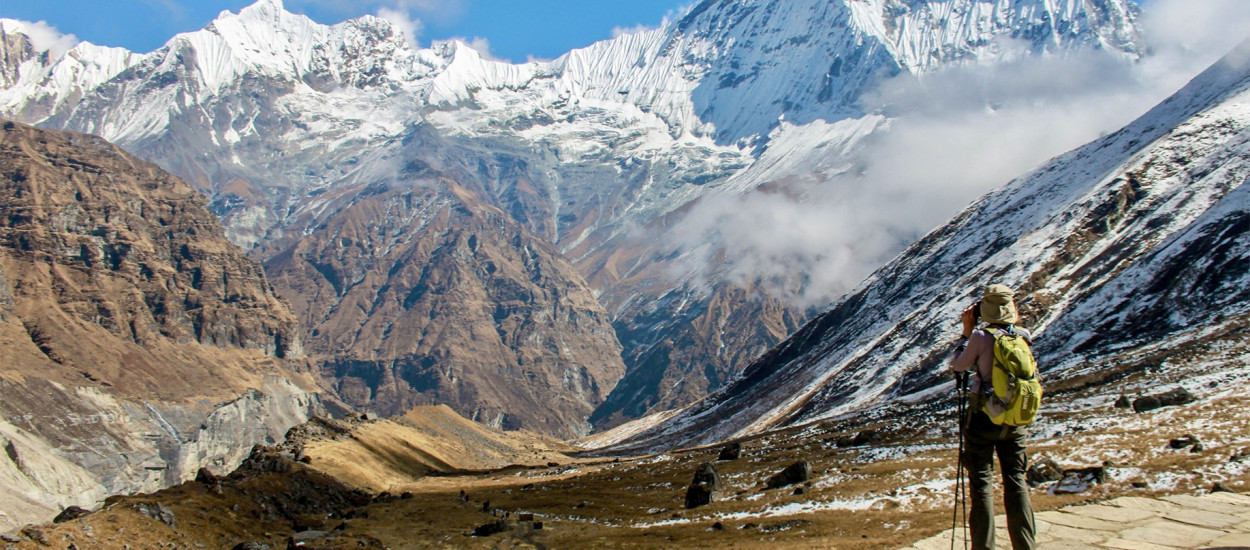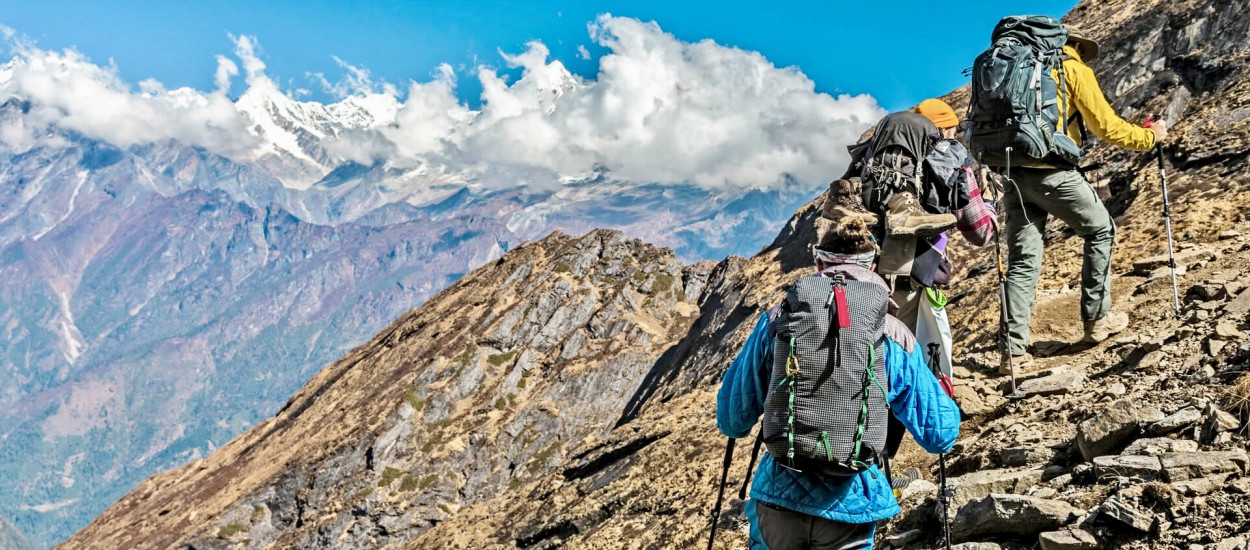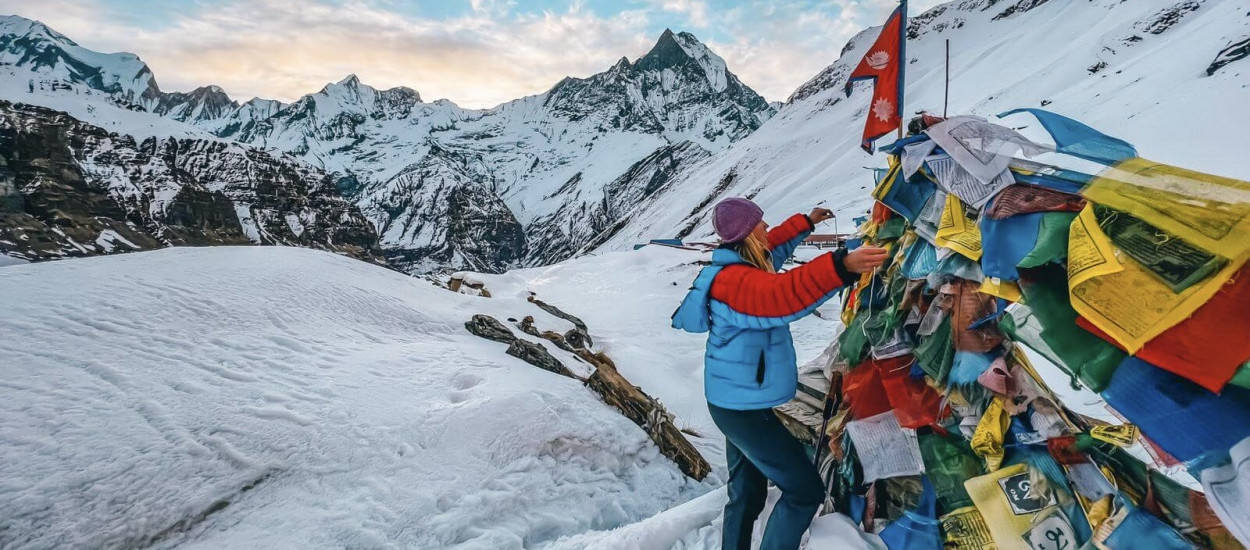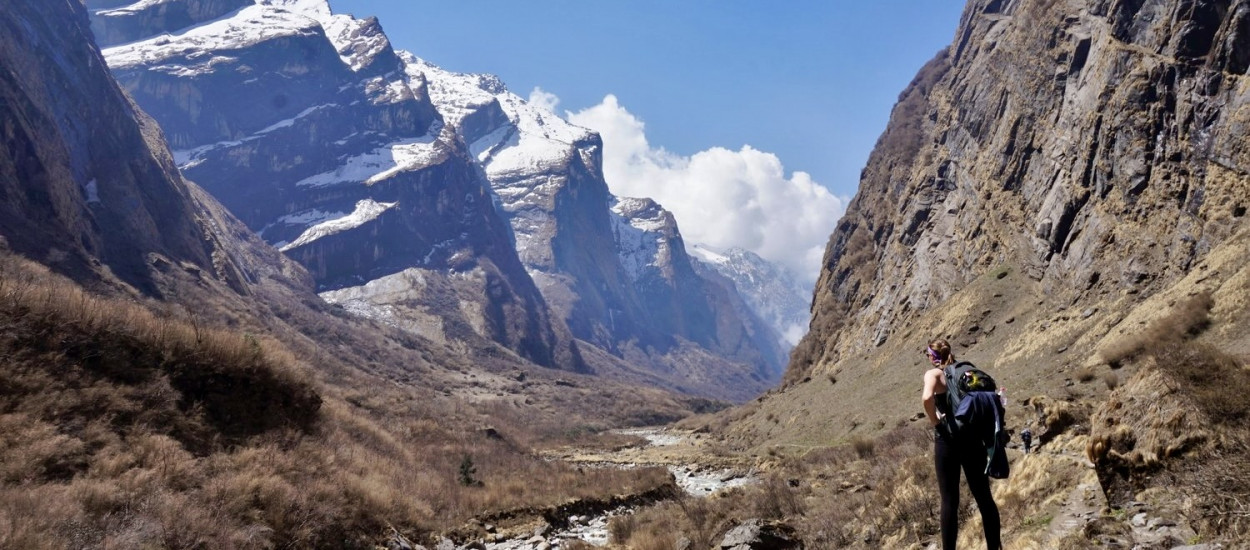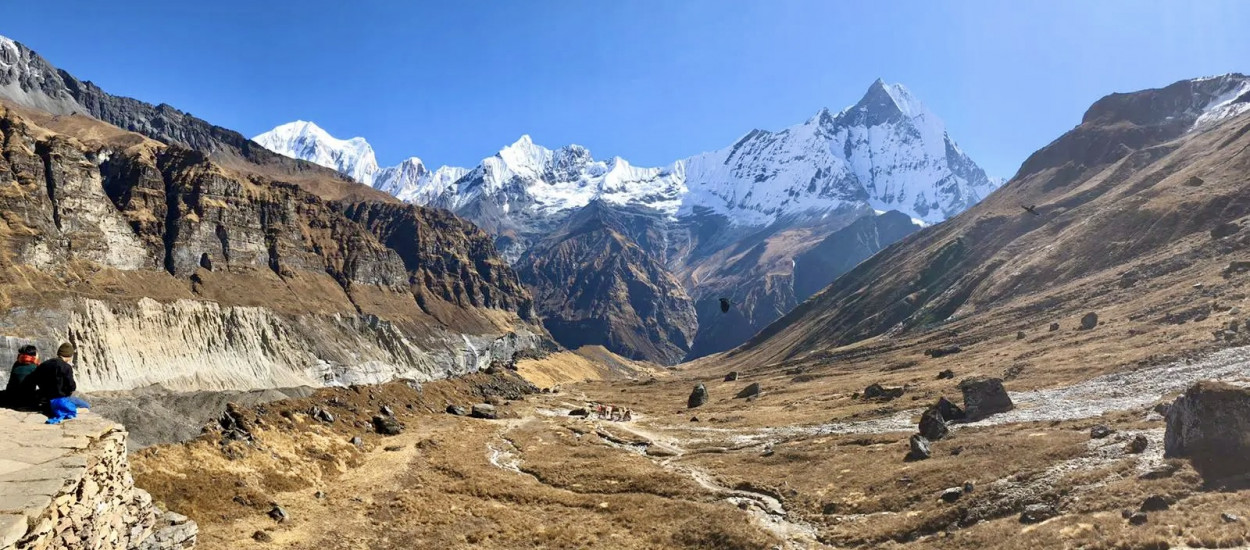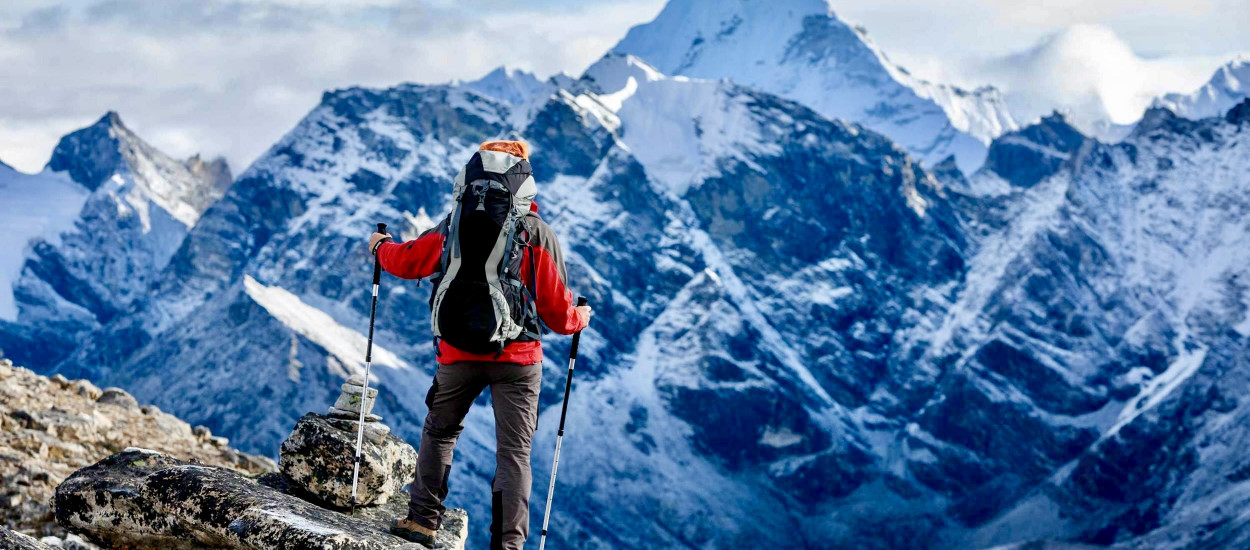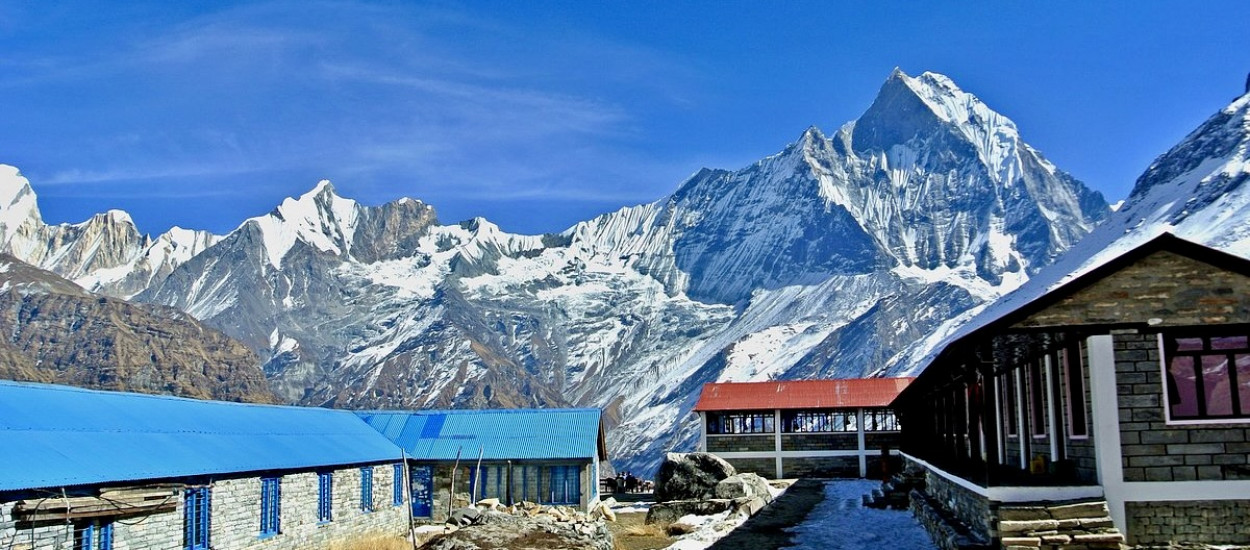Good to Know
Altitude during the Annapurna Base Camp trek
The Annapurna Base Camp trek is renowned not only for its breathtaking landscapes and cultural richness but also for the varying altitudes along its path, which provide a progressive challenge to trekkers. Understanding the altitude changes during the trek is crucial for proper acclimatization and to minimize the risks of altitude sickness.
-
Kathmandu: Starting point at 1,400 meters.
-
Pokhara: Layover before the trek, around 800 meters.
-
Nayapul: Trek start, 1,070 meters.
-
Tikhedhunga: Early trek stage, 1,540 meters.
-
Ghorepani: Known for Poon Hill, 2,860 meters.
-
Tadapani: 2,610 meters.
-
Chhomrong: Major village on the trek, 2,170 meters.
-
Doban: Advancing into the sanctuary, 2,600 meters.
-
Deurali: Higher altitude stage, 3,230 meters.
-
Machhapuchhre Base Camp (MBC): Near the high altitudes, 3,700 meters.
-
Annapurna Base Camp (ABC): Highest point of the trek, 4,130 meters.
-
Acclimatization: Gradual ascent and rest days are crucial for adjusting to altitude and minimizing altitude sickness risks.
Symptoms of Altitude Sickness: Include headaches, nausea, and dizziness. Important to descend if symptoms develop.
By understanding and preparing for these altitudes, trekkers can enhance their safety and enjoyment on this spectacular journey.
Porter Service the Annapurna Base Camp Trek
The Porter Service during the Annapurna Base Camp Trek plays a vital role in enhancing the overall trekking experience by assisting trekkers with carrying their gear and navigating the challenging terrain. Hiring a porter can significantly reduce the physical strain on trekkers, allowing them to fully enjoy the stunning landscapes and cultural experiences along the way. Here’s an in-depth look at the porter services available for this trek:
- Load Management: Porters carry up to 20-25 kg of your gear, enabling you to trek with just a light daypack.
-
Safety and Guidance: Experienced porters know the safest and most scenic routes, adding an extra layer of security.
-
Cultural Insight: Hiring local porters offers valuable insights into the local culture and traditions.
-
Fair Employment: Ensure porters are hired through reputable companies that provide fair wages, insurance, and proper equipment.
-
Cost: The cost is generally affordable and includes the porter's salary, insurance, food, and accommodation.
-
Ethical Considerations: Trekkers should ensure porters are treated well, with adequate clothing, footwear, and reasonable load limits.
-
Support Local Economies: Hiring porters helps provide essential employment in remote regions.
Using porter services enhances your trekking experience, easing physical demands and fostering meaningful cultural exchanges, all while supporting local communities.
Permits for the Annapurna Base Camp Trek
For anyone planning the Annapurna Base Camp Trek, obtaining the necessary permits is an essential step. The region is managed to ensure environmental sustainability and cultural preservation, and the fees collected from permits help support these efforts. Here’s a guide to understanding and acquiring the required permits for your trek:
Types of Permits Required
-
Annapurna Conservation Area Permit (ACAP): This permit is mandatory for all trekkers entering the Annapurna Conservation Area. The ACAP helps fund conservation efforts, maintain trails, and support local communities.
-
Trekkers' Information Management System (TIMS) Card: The TIMS Card is designed to enhance the safety and security of trekkers. It helps authorities keep track of trekkers and assist efficiently in case of emergencies.
Where to Obtain the Permits
-
In Kathmandu: Permits can be obtained at the Nepal Tourism Board office.
-
In Pokhara: For those starting the trek from Pokhara, permits are available at the Nepal Tourism Board’s service center and some trekking agencies.
Costs
-
ACAP: As of the latest update, the cost is USD 30 (or equivalent in Nepali rupees) for foreign trekkers, and a different rate applies for SAARC nationals.
-
TIMS Card: USD 20 for individual trekkers and USD 10 for trekkers in a group. Different rates apply for SAARC nationals.
Documentation Required
Important Considerations
-
No Solo Trekking: In certain parts of the Annapurna region, solo trekking without a guide or porter is discouraged due to safety concerns.
-
Working Hours: Be aware of the working hours of the permit offices, typically from 10 AM to 5 PM, closed on government holidays.
-
Keep Permits Accessible: Trekkers must carry their permits with them at all times during the trek as there are multiple checkpoints where permits will need to be shown.
Securing these permits not only complies with Nepali laws but also contributes to the sustainability of trekking tourism in the Annapurna region, helping to ensure that its natural beauty and cultural heritage can be preserved for future generations. It is recommended to arrange these permits through a registered trekking agency, which can streamline the process and provide up-to-date information on any changes in regulations or fees.
Preparation for the Annapurna Base Camp Trek
Preparing for the Annapurna Base Camp Trek is crucial to ensure a safe, enjoyable, and successful adventure. This trek, known for its stunning vistas and cultural richness, requires careful planning in several key areas. Here's how you can prepare for your trek:
Physical Preparation
-
Training: Start a regular fitness routine months before your trek. Focus on cardiovascular exercises like running, cycling, and swimming, along with strength training, especially for the legs and core. Consider incorporating hill walks with a weighted backpack to simulate trekking conditions.
-
Acclimatization: Plan for gradual acclimatization to avoid altitude sickness. Spend a few days in Kathmandu or Pokhara before starting the trek to get used to higher elevations.
Gear and Clothing
-
Trekking Boots: Invest in high-quality, waterproof, and broken-in trekking boots to prevent blisters and provide ankle support.
-
Layered Clothing: Weather in the Annapurna region can vary widely. Pack layers including base layers, insulation layers, and a waterproof outer layer.
-
Essential Gear: Include a backpack, sleeping bag suitable for sub-zero temperatures, a headlamp, trekking poles, and a water purification system.
Health and Safety
-
Travel Insurance: Obtain comprehensive travel insurance that covers emergency evacuation and high-altitude trekking.
-
Vaccinations and Medications: Consult with your doctor to get recommended vaccinations and prescriptions for travel-related illnesses. Pack a personal first aid kit with altitude sickness medication.
Documentation
Mental Preparation
-
Research: Familiarize yourself with the trek’s route, conditions, and potential challenges. Reading books or blogs, and watching documentaries or videos about the trek can be very helpful.
-
Local Customs and Language: Learn about the local customs, culture, and a few basic phrases in Nepali to enhance interaction with local people.
Logistic Arrangements
By thoroughly preparing for the Annapurna Base Camp Trek, trekkers can maximize their chances of a successful and memorable experience. Good preparation addresses the physical demands of the trek, ensures safety and comfort, and respects the natural and cultural environment of the Annapurna region.
Accommodations and Meals during the Annapurna Base Camp Trek
During the Annapurna Base Camp Trek, accommodations and meals are designed to cater to the needs of trekkers, offering comfort and sustenance in the rugged Himalayan environment. Here’s a comprehensive guide on what to expect regarding lodging and dining along this popular trekking route:
Accommodations
-
Teahouses: The primary form of accommodation along the Annapurna Base Camp route is in teahouses. These are small, family-run lodges that offer basic rooms and communal dining areas. Rooms typically provide simple beds with mattresses, pillows, and blankets. It’s advisable to bring your own sleeping bag for additional warmth.
-
Standard of Facilities: As you ascend to higher altitudes, the facilities may become more basic. Most teahouses provide shared bathroom facilities, and only lower down on the trek will you find rooms with attached bathrooms.
-
Booking in Advance: During the high season (spring and autumn), it can be beneficial to book your accommodations in advance through a trekking agency to ensure availability.
Meals
-
Menu Options: Teahouses along the trek offer a variety of meals catered to a range of dietary preferences. The menu typically includes traditional Nepali food such as dal bhat (rice and lentils) which is nutritious and provides a good balance of carbohydrates and protein. Also available are pasta, momos (dumplings), Tibetan bread, and a variety of soups and noodle dishes.
-
Hygiene and Water: While teahouses make efforts to maintain food hygiene, it’s advisable for trekkers to carry water purification tablets or systems. Bottled water is also available for purchase but carrying a reusable bottle and treating water is more environmentally friendly.
-
Special Dietary Requirements: If you have specific dietary requirements, it's a good idea to inform your guide or the teahouse in advance. While options may be limited at higher altitudes, most cooks are accustomed to adjusting meals to accommodate trekkers' dietary needs.
Additional Tips
-
Costs: It’s important to note that as you go higher up the trail, the cost of food and accommodations can increase due to the difficulty of transporting goods to these remote locations.
-
Cultural Considerations: Showing respect for local customs and practices in teahouses enhances the experience. Engaging with your hosts and other trekkers can enrich your understanding of the region’s culture.
-
Environmental Considerations: Many teahouses are taking steps to operate sustainably. Trekkers can contribute by minimizing waste, avoiding single-use plastics, and using solar charging facilities where available.
By preparing for the basic yet comfortable accommodations and enjoying the hearty meals served along the Annapurna Base Camp Trek, trekkers can focus on the stunning landscapes and challenging trails, ensuring a rewarding experience in the Nepalese Himalayas.
Transportation and Flights on Annapurna Base Camp Trek
When planning the Annapurna Base Camp Trek, understanding the transportation logistics and flight options is essential for a smooth travel experience in Nepal. Here’s a detailed guide on the transportation arrangements you can expect before and during your trek:
Getting to Nepal
- International Flights: Most international travelers will arrive at Tribhuvan International Airport in Kathmandu, the main entry point into Nepal. Major airlines offer flights from Europe, North America, the Middle East, and Asia.
Domestic Travel to Pokhara
-
Flights to Pokhara: Domestic flights from Kathmandu to Pokhara are the quickest way to reach the starting point of the trek. The flight takes about 25-30 minutes and offers stunning views of the Himalayas. Airlines like Yeti Airlines and Buddha Air operate several flights daily.
-
Road Transportation: Alternatively, you can take a tourist bus, private vehicle, or local bus from Kathmandu to Pokhara. The journey by road takes approximately 6-7 hours, depending on traffic and road conditions.
Transportation to the Trek Starting Point
- From Pokhara to Nayapul: The trek typically starts at Nayapul, which is about 1.5 to 2 hours drive from Pokhara. Trekkers often use a private taxi or a local bus to reach Nayapul from Pokhara. This is where the walking part of the journey begins.
During the Trek
Returning to Pokhara and Kathmandu
-
Back to Pokhara: After completing the trek, you will return to Pokhara by foot to Nayapul and then by road transportation. Once in Pokhara, you can rest or explore the city before heading back to Kathmandu.
- Return to Kathmandu: You can choose to fly or take road transportation back to Kathmandu. Flights are quicker and offer another opportunity to view the mountains from the air, while the road trip allows for stops at scenic and cultural sites along the way.
Tips for Travelers
-
Booking Flights and Transport: It’s advisable to book your flights and transportation in advance, especially during the peak trekking seasons of spring and autumn, to ensure availability.
-
Local Transportation: Familiarize yourself with local transportation options. Local buses are cheaper but less comfortable than tourist buses or private vehicles.
-
Pack Light: Since you will be moving frequently and carrying your belongings during the trek, it's practical to pack light and only bring essentials.
Understanding and planning your transportation and flights for the Annapurna Base Camp Trek not only ensures a hassle-free journey but also allows you to enjoy the scenic transitions from urban landscapes to the remote beauty of the Himalayas.
Nepal Visa for the Annapurna Base Camp Trek
For international trekkers planning to undertake the Annapurna Base Camp Trek, securing a Nepal visa is an essential step. Fortunately, Nepal offers a relatively straightforward visa process, particularly for tourists. Here's what you need to know to prepare for your journey:
Visa Options
-
On Arrival: Many travelers can obtain a tourist visa on arrival at Tribhuvan International Airport in Kathmandu or at various land entry points if traveling overland from India or Tibet. This is convenient for trekkers who prefer to arrange their visas as part of their travel itinerary.
-
Embassy or Consulate Application: Alternatively, you can apply for a visa at a Nepali embassy or consulate before departure. This might be preferable for those who wish to have all travel documents arranged in advance.
Required Documents
-
Passport: Must be valid for at least six months beyond the date of entry into Nepal.
-
Passport-Sized Photos: Bring at least two recent passport-sized photos for the visa application.
-
Visa Application Form: Available at the airport or border crossing, or downloadable in advance from the embassy’s website.
Visa Fees
Visa fees depend on the length of your stay:
Visa Extension
- If you wish to extend your stay for more than the duration granted upon your arrival, you can apply for a visa extension at the Department of Immigration in Kathmandu or Pokhara. Extensions are granted for a maximum of 150 days per calendar year.
Points to Consider
-
Visa on Arrival: The process is generally quick, but queues can be long during peak tourist seasons. Arriving early in the day can help shorten your waiting time.
-
Currency: Ensure you have the correct visa fee in USD as other currencies may not be accepted for visa payments.
-
Online Application: Nepal has introduced an online visa application process which can save time upon arrival. You can fill out the form and print the confirmation to show at the immigration desk.
Obtaining your Nepal visa for the Annapurna Base Camp Trek is straightforward, especially with the option for a visa on arrival. By ensuring you have all necessary documents and fees prepared, you can begin your trek with peace of mind, ready to experience the breathtaking landscapes and rich cultural heritage of Nepal.
Safety on Annapurna Base Camp Trek
The Annapurna Base Camp Trek is a journey through some of the most beautiful landscapes on Earth, but it also presents certain challenges and risks. Ensuring safety on this trek involves careful planning and adherence to best practices. Here’s what you need to know to stay safe while enjoying this incredible adventure:
Preparation and Planning
-
Physical Fitness: Ensure you are in good health and condition before attempting the trek. Training should include cardiovascular exercises and strength training to prepare your body for the demands of the trek.
-
Acclimatization: Altitude sickness is a major concern. Plan your itinerary to include adequate days for acclimatization, especially as you ascend above 2,500 meters.
-
Guide and Porters: Hiring experienced guides and porters can enhance your safety. They are familiar with the terrain, weather conditions, and symptoms of altitude sickness.
Gear and Equipment
-
Appropriate Clothing: Weather in the Annapurna region can change rapidly. Wear layered clothing and pack essential gear, including a waterproof jacket, warm insulation, hats, gloves, and good-quality hiking boots.
-
Navigation Tools: Although the trail is well-marked, carrying a map, compass, or GPS device is recommended. Mobile apps can also be helpful for navigation and tracking.
-
First Aid Kit: Carry a basic first aid kit with supplies for treating minor injuries. Include medication for altitude sickness, diarrhea, and other common ailments.
On the Trail
-
Stay Hydrated: Dehydration can increase the risk of altitude sickness. Drink plenty of water, and use water purification tablets or filters to treat water from streams.
-
Weather Awareness: The weather can be unpredictable. Stay informed about the weather forecast and be prepared for sudden changes.
-
Travel Insurance: Make sure you have travel insurance that covers high-altitude trekking and emergency helicopter evacuation. Check the details of your policy to ensure adequate coverage.
Emergency Procedures
-
Know the Symptoms of Altitude Sickness: Watch for symptoms such as headache, nausea, dizziness, and fatigue. If symptoms worsen, descend to a lower altitude and seek medical help.
-
Emergency Contacts: Keep a list of emergency contacts, including local authorities, your embassy, and trekking agency contacts. Portable solar chargers can be useful to keep devices powered.
-
Evacuation Plans: Familiarize yourself with the nearest medical facilities and evacuation routes. In case of severe illness or injury, helicopter evacuation may be necessary, which is typically coordinated by your guide in conjunction with local authorities.
By addressing these safety considerations, trekkers can minimize risks and enjoy a memorable journey on the Annapurna Base Camp Trek. With the right preparation, the right gear, and a cautious approach, you can safely experience the beauty and challenge of the Himalayas.
Trip Extensions on Annapurna Base Camp Trek
Exploring the Annapurna Base Camp Trek is an adventure of a lifetime, but for those looking to extend their trip, the region offers several captivating options that can enrich your experience even further. Here are some popular trip extensions that trekkers might consider to enhance their Himalayan adventure:
Poon Hill
-
Overview: A shorter trek that can be easily integrated with the Annapurna Base Camp Trek, Poon Hill is famous for its spectacular sunrise views over the Annapurna and Dhaulagiri ranges.
-
Duration: Adds 3-5 days to your itinerary.
Annapurna Circuit
-
Overview: For those seeking a longer challenge, the Annapurna Circuit offers an extended trekking experience that explores the diverse landscapes and cultures around the entire Annapurna massif.
-
Duration: Extends the trip by 12-20 days, depending on your pace and route chosen.
Chitwan National Park
-
Overview: After the high-altitude trek, a visit to Chitwan National Park offers a stark contrast. Located in the Terai lowlands of Nepal, it’s a great place to experience wildlife safaris, spotting rhinos, elephants, and possibly tigers.
-
Duration: Typically, a 2-3 day extension.
Lumbini
-
Overview: The birthplace of Buddha offers a spiritual extension to your trek. Lumbini is a significant pilgrimage site with temples and monasteries built by various international Buddhist communities.
-
Duration: Adds 1-2 days to your trip.
Kathmandu Valley Sightseeing
-
Overview: Explore the historic sites in Kathmandu Valley, including the UNESCO World Heritage Sites like the Kathmandu Durbar Square, Swayambhunath Stupa (Monkey Temple), and Bhaktapur.
-
Duration: 2-3 days to fully appreciate the cultural heritage.
Pokhara Relaxation and Activities
-
Overview: Before heading back home, spend a few days in Pokhara where you can relax by the lake, enjoy paragliding, visit the Peace Pagoda, or explore the local caves.
-
Duration: 2-4 days, depending on the activities chosen.
Tips for Planning Trip Extensions
-
Book in Advance: Especially during the peak trekking seasons, it's wise to book your extensions in advance to secure accommodation and guide services.
-
Consider Logistics: Some extensions, especially those involving long distances or remote areas, require careful planning regarding transport and supplies.
-
Local Guidance: Utilizing local guides not only enhances your experience but also supports the local economy.
These trip extensions not only add variety to your journey but also deepen your appreciation of Nepal’s natural beauty and cultural richness. Whether you’re looking for additional trekking, wildlife exploration, or cultural immersion, extending your trip provides a fuller experience of what Nepal has to offer.
Tipping for Annapurna Base Camp Trek
Tipping on the Annapurna Base Camp Trek is a customary practice that acknowledges the hard work and support of guides, porters, and other staff who enhance your trekking experience. Understanding the norms and expectations around tipping can help trekkers show their appreciation appropriately. Here are some guidelines on how to manage tipping during your trek:
Who to Tip
-
Guides and Porters: These are the primary individuals you’ll interact with who play crucial roles in ensuring a safe and enjoyable trek.
-
Teahouse Staff: This may include cooks and other workers at the lodges where you stay.
How Much to Tip
The amount to tip can vary based on the length of the trek, the size of the group, and the level of service provided. Here are some general guidelines:
-
Guides: A common recommendation is to tip guides about $10 to $15 per day from the group.
-
Porters: Tipping porters around $5 to $10 per day from the group is typical.
-
Calculation: A good rule of thumb is to pool tips from all group members to give a collective tip, which is then distributed among the guides and porters.
When to Tip
- End of the Trek: It’s customary to give tips on the last evening of the trek or the following morning before you part ways. This allows for recognition of their efforts throughout the entire journey.
Method of Tipping
-
Cash: Tipping in cash is preferred as it provides immediate benefits to the guides and porters. Ensure you have enough small bills in Nepali currency to make tipping easier.
-
Envelopes: Using envelopes to distribute tips can add a level of formality and respect to the process. It’s also a discreet way to handle the exchange.
Cultural Considerations
-
Respect and Gratitude: Tipping is more than a transaction; it's a way to express gratitude for the hard work and dedication of the staff who have assisted you.
-
Local Economy: Tipping also supports the local economy by providing additional income to the guides and porters who rely heavily on this income to support their families.
Communication
- Discuss with Your Group: If you are part of a group, discuss and plan your tipping strategy together to ensure fairness and avoid discrepancies in the amounts given.
Tipping on the Annapurna Base Camp Trek not only reflects a gesture of thanks but also supports the community involved in facilitating these treks. By following these guidelines, trekkers can ensure that their appreciation is communicated effectively and respectfully.
For the Nepal tour, please click here.
If you are looking for different kinds of Nepal Tours or Trekking Packages, feel free to contact us.
